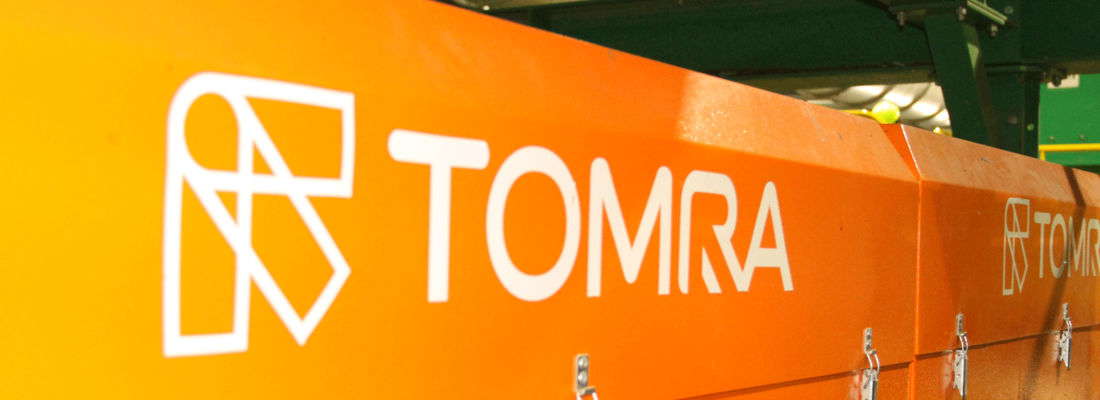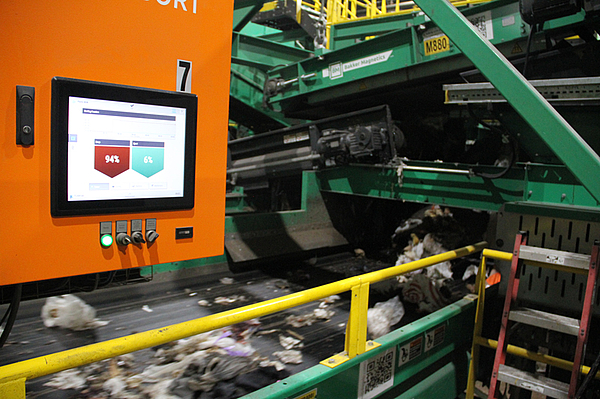Santa Barbara County’s Resource Center in California may quite possibly be a model of efficiency for future material recovery facilities (MRF) in North America. Conceptualized roughly 20 years ago, the mixed waste processing facility at the Tajiguas Landfill site, in operation since 2020, is designed to meet the state’s stringent organics recycling diversion targets set for 2025. Plus, it recovers valuable recyclable commodities from municipal solid waste (MSW) that would have been landfilled just a couple of years ago.
“What makes the facility unique is it must sort all materials before disposing in the landfill,” says Wilfred Poiesz, recycling system design and sales manager for VAN DYK Recycling Solutions, Norwalk, Conn, the MRF builder. “It runs both MSW and single stream on the same circuit.”
Beyond this, Carlyle Johnston, project leader at the County of Santa Barbara, adds, “We have the landfill, MRF, organic anerobic digestion facility, mulcher and compost at this site. We are the only facility to have all these operations sited at one location.”
A green solution for organics
Dubbed the biggest change to happen in waste management in over 30 years, California’s SB 1383 targets organic waste to reduce short-lived climate pollutants in the state. It requires the state to reduce 75% of organic wastes – food, green waste, paper products, among others – by 2025. In 2018, California disposed of approximately 24 million tons of organic waste, and the mandate targets to reduce this by more than 20 million tons by 2025.
The recovery facility’s design was, in part, geared toward meeting those mandates. The Tajiguas Landfill serves the South Coast and the Santa Ynez and New Cuyama Valleys’ commercial and residential waste services. “We serve approximately 220,000 people,” offers Johnston. “Santa Barbara is an affluent county, and the general rule is waste generation increases with affluence. Waste generation for county residents averages 9 lb/person.”
The facility first shreds MSW to break apart and resize materials before being processed. “The automated circuit handles material between 2.5-14 inches,” explains Poiesz. After shredding, a series of trommels and screens sizes the material. Any heavy material falling through the 2.5-in screens is treated as organics and sent to the anerobic digesters. It is converted into compost and biogas for electricity.
Johnston explains the importance of removing organics from landfilled materials. “Decomposing organics emits methane gas, which is a short-lived climate super pollutant 25 to 100 times more potent as a GHG than carbon dioxide (CO2). In addition to biogas, the site also employs solar and landfill gas for our power needs to make us self-sustaining plus a donor to the grid.”
Commenting on the success of the landfill to reduce greenhouse gas (GHG) emissions, he added, “This facility is the single largest reducer of GHG in the county. We are reducing 117,000 metric tons of CO2 annually, which is equivalent to taking 28,000 cars off California’s roads.”
Profiting from commodity recovery
With 20,000 ft2 under roof for tipping floor space, Alan Coulter, general manager for MarBorg Recovery, operator of the Resource Center’s MRF, says space is tight. “We can’t keep material sitting on the floor for too long. We must keep it flowing from the floor to the circuit,” he says.
Poiesz mentions the automated sorting circuit’s designed capacity is 1,000 tons per day. “We currently run, on average, 800 tons per day of both MSW and single stream,” adds Brandan Fix, operations manager for MarBorg.
The screening process also separates oversized material greater than 14 in, diverted from the automated circuit for manual sorting. “Our goal is for quantity of material removed from the stream, so we employ manual sorters to help maximize material recovery,” offers Coulter. Johnston further explains, “We have a 60% contracted diversion rate from the landfill for MSW material.”
The remaining 2.5- to 14-in waste material is sent through a series of 10 TOMRA AUTOSORT™ units for recovery of valuable recyclable commodities, including plastics, plastic film, paper and wood. Ty Rhoad, regional director Americas for TOMRA Recycling Sorting explains, “MSW contains valuable secondary raw materials. If they are recovered through mixed waste sorting and further recycling, we take circularity and greenhouse gas (GHG) benefits to new heights.”








